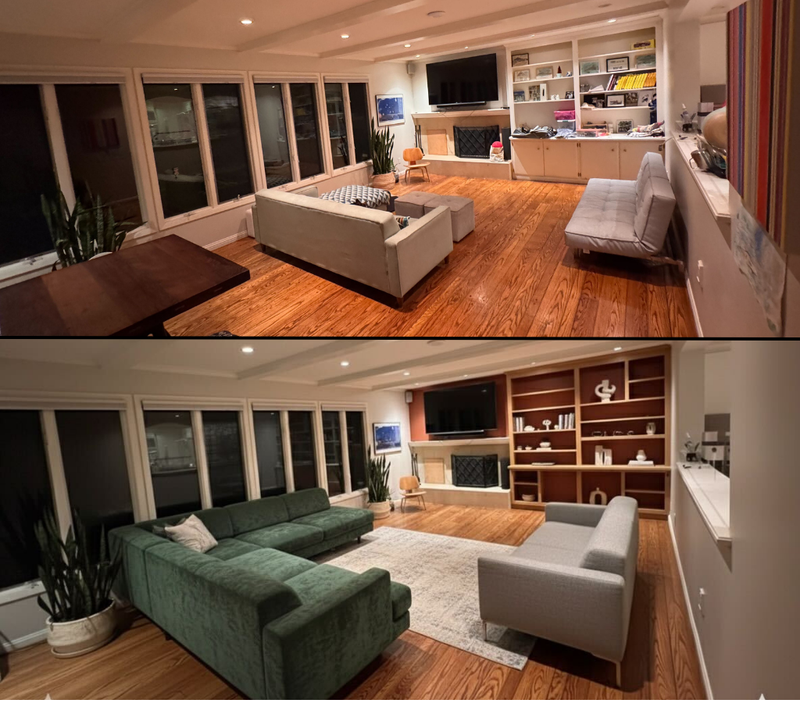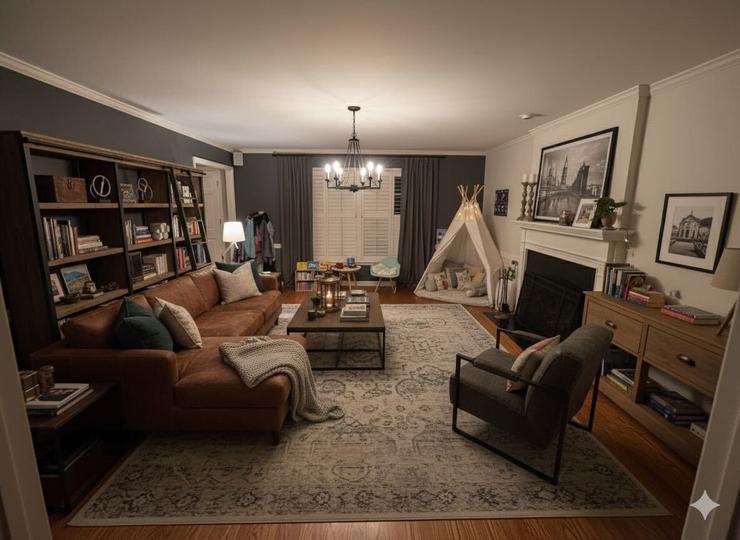Reed’s view
A couple of years ago, AI couldn’t generate people with the right number of fingers. Today, image creation tools are so good that they are quickly becoming part of everyday digital life. Video isn’t far behind.
This became clear to me last weekend, when I was trying to reclaim my home from two strong-willed children, and struggling to picture adult furniture in the place of the Lego-covered maze of forts that has taken over my living room.
After trying and failing to find an easy-to-use app to help me solve this puzzle, I snapped some photos of the rooms I wanted to overhaul and uploaded them to Google’s Gemini app. I used the Nano Banana feature to make the room empty. Then I asked it to try out different furniture combinations, wall colors, etc. It was brilliant. Instead of flipping through Pinterest and trying to use my imagination, I had a photograph of my future room in about five minutes.
Here’s a visual representation of the before (top) and the after (bottom):

I also sometimes use AI video to occupy my kids: On vacation this summer, my 7-year-old pointed to a “Jackalope” trophy on the wall of a restaurant and asked me what it was. I took a photo and used Veo 3 to make it sing.
As these models improve their ability to mimic physics, they’ll do more and more. When I buy a new couch, I’ll ask an AI model to show me a video of the best way to carry it into the house. These will quickly become hard-to-break habits. While most of the reaction to OpenAI’s new Sora app has been about the social media features, I think the real-world utility of this tech is getting less attention than it deserves.
In this article:
Room for Disagreement
Home designer Allisa Jacobs wrote in a blog post that AI routinely misjudges the proportions and sizes of rooms and furniture, suggesting pieces that wouldn’t realistically fit in the space. Some tools also appear to prioritize advertising products in a room rather than creating a cohesive design, she wrote. Other interior designers agree, arguing that human touch is necessary in home decoration.
Notable
- A June paper goes a step further from the AI-generated visual representation of spaces, proposing a post-processing system that identifies the materials used in images and maps out their carbon footprint, providing sustainability feedback for designers.


